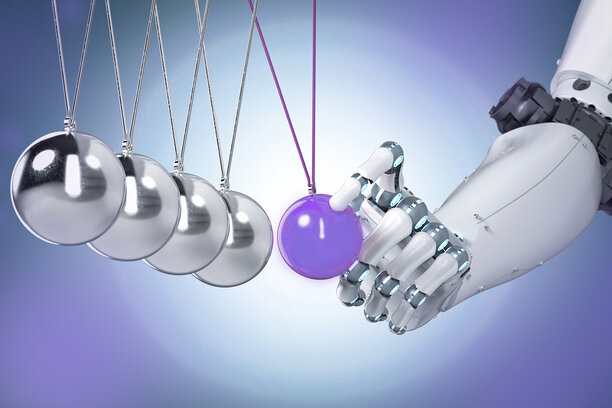Decision-making for Engineering Systems
Next-generation AI systems for engineering applications should not only analyze data to make recommendations and put forward advice, but will have to make decisions in an increasingly autonomous fashion. Given the ever-increasing complexity of (autonomous) engineering systems and the open environments in which they operate, we need to manage the complexity of combined physics- and data-based models forming the basis for AI-guided real-time monitoring and decision-making for such systems. We furthermore need guarantee certificates on reliability, safety, performance, security and privacy of AI-based autonomy such that a (partial) shift of responsibility for decisions from humans to machines can be confidently made.
Trustworthy Data Integration
Data-driven intelligence crucially relies on integration and management of data and knowledge models. Key in data-driven intelligence is model construction and application, i.e., extracting and representing knowledge from data and leveraging this knowledge in AI applications. Cross-cutting concerns in practice are privacy, security, fairness, and explainability. Important scientific challenges are on engineering data and knowledge intensive systems for reliability, scalable data, knowledge modelling and integration solutions, trustworthy machine learning and data mining methods, and advanced AI methods for trustworthy reasoning.
Merging Models and Data in AI
For design, modelling, operation and control of engineering systems that are to operate at a high level of autonomy, next generation AI techniques are required that optimally combine information from data and from constitutive (first-principle) models and domain knowledge from science domains (e.g., physics), with the primary goal to design intelligently operating engineering systems. Prime concerns in reaching this goal involve merging physical models into machine learning and autonomous decision making, and merging AI techniques into engineering system design.
Certifiable, Robust, and Explainable AI
Modern successful AI models require smart algorithms as well as enormous amounts of data and computer resources to be trained. AI tools deal with many competing goals aiming to capture the meaning of data, accurate representation learning, and treatment of information; linking it with the use of AI models that are as robust, interpretative, and expressive as possible. This results in massive challenges in terms of computational tractability, efficiency, and scalability. Operators of high tech systems should be able to inspect and comprehend the workings of AI. Developers strive to deliver AI systems that are effective and reliable, but such achievements can be wasted when users do not understand the underlying mechanisms and view AI systems with distrust. Of particular interest is explainability in the context of edge-AI which brings about special challenges due to the heterogeneity of devices, services, and data sources.
AI Systems Engineering
In order to equip real-world systems with AI technology for realizing highly autonomous and intelligent behavior, an integrated approach to system design needs to be developed in which AI aspects are integrated into the design of engineering systems, and engineering aspects are integrated in the design of AI systems. This is the domain where the physical, the cyber/digital, and the human-technology interaction aspects of the engineering systems meet and are integrated in an overarching AI systems engineering design approach for cyber-physical systems that interact with and support humans.
Computational AI Hardware and Software
The massive deployment of AI techniques in high tech systems urges the development of highly energy-efficient hardware and software architectures to enable automated algorithms for learning and decision-making to effectively run on -possibly small scale- intelligent information processing devices. This includes the development of dedicated sensors, actuators and communication networks, as part of AI-driven engineering systems.
Augmenting Intelligence
Augmenting intelligence pertains to machines understanding humans and adapting to and supporting them in ways that ameliorate and overcome their cognitive and behavioral limitations whilst enhancing their cognitive, behavioral and social strengths. Instead of replacing humans through the systems we build, or making them subservient to the requirements of machines, we need human-sensitive and socially intelligent AI to understand and augment human abilities, as much as we need humans to direct, augment, and humanize AI.
Democratizing AI
To lower the threshold for applying AI and broadening the population of users and creators of AI, we aim to democratize the deployment, design, and development of AI systems addressing holistically the technological and socio-technical challenges regarding the application of AI in a diversity of contexts such as work, leisure, health, learning, etc. We are especially concerned with making AI accessible and transparent to non-AI-experts and the people directly affected by it, empowering them in shaping ethical, societal, political, and cultural aspects of AI. We strive to expand the set of people who can use AI for their endeavors, and thus expand the application of AI in new domains.
Close

